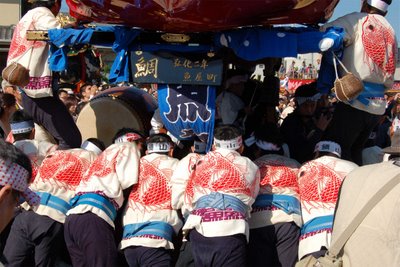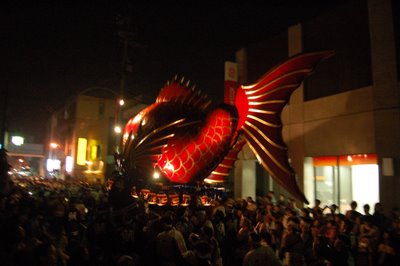
A funny Christmas it was.
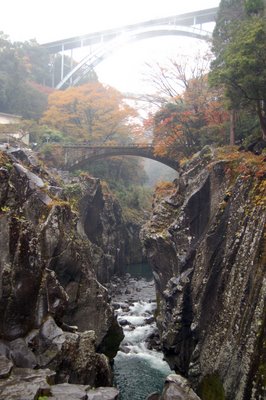 Bridges seem to come in threes, stacked above each other.
Bridges seem to come in threes, stacked above each other.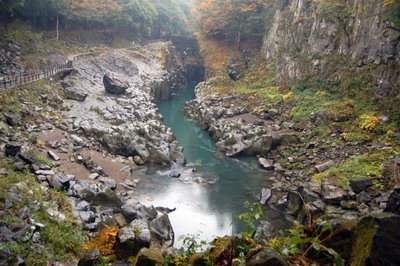
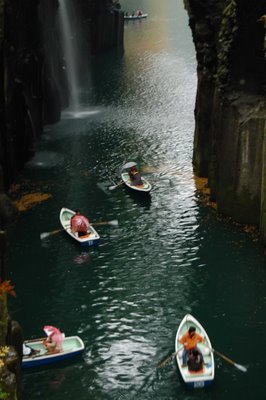
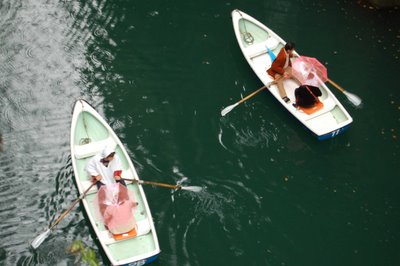 I should point out that these excessive warnings are not like those in the U.K. or America. Japan does not share our highly litigious culture. These signs are not the ‘Get out of Jail’ cards that our companies and organisations sprinkle so liberally to prevent damaging court cases. Rather, I think these are a sign of the very strong sense of public duty and culpability in Japanese society. If someone hurt themselves, that would be YOUR fault, as municipal worker.
I should point out that these excessive warnings are not like those in the U.K. or America. Japan does not share our highly litigious culture. These signs are not the ‘Get out of Jail’ cards that our companies and organisations sprinkle so liberally to prevent damaging court cases. Rather, I think these are a sign of the very strong sense of public duty and culpability in Japanese society. If someone hurt themselves, that would be YOUR fault, as municipal worker.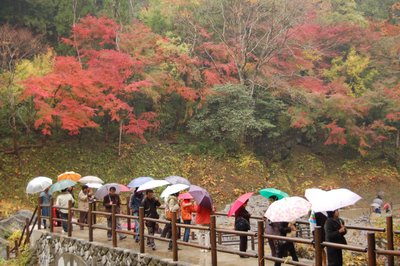 As I walked, I grumbled to myself about all this paranoia and environmental damage. I clambered around on the rocks, and sat in the drizzle on a boulder, twisting around to try to find a direction that would allow me to avoid seeing any concrete. As I stepped from one stone to the next, it gave way beneath me, and I sprawled into the river, banging my knee and drenching my leg.
As I walked, I grumbled to myself about all this paranoia and environmental damage. I clambered around on the rocks, and sat in the drizzle on a boulder, twisting around to try to find a direction that would allow me to avoid seeing any concrete. As I stepped from one stone to the next, it gave way beneath me, and I sprawled into the river, banging my knee and drenching my leg.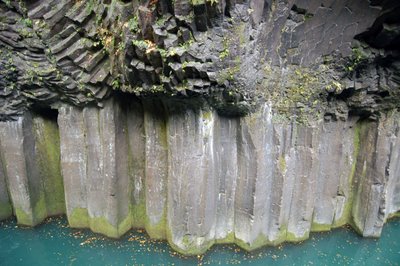 I limped back into town, tail between my legs. I think something heard me muttering about paranoia.
I limped back into town, tail between my legs. I think something heard me muttering about paranoia.
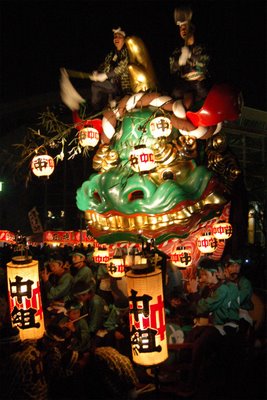
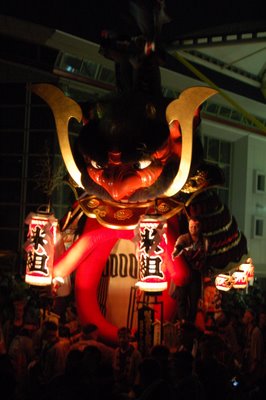
 Fourteen floats, each three stories high and several tonnes in weight, are dragged in grand style through the town by hundreds of people. The floats are between 150 and 200 years old, but remain immaculately decorated and in pristine condition.
Fourteen floats, each three stories high and several tonnes in weight, are dragged in grand style through the town by hundreds of people. The floats are between 150 and 200 years old, but remain immaculately decorated and in pristine condition.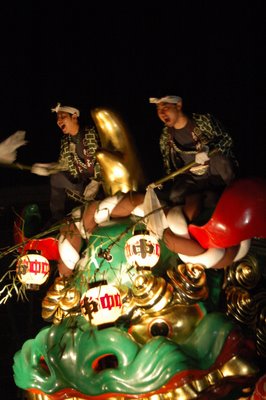 Given that they are clearly such treasures, it is heartening to see two men perched atop every float, urging the straining crowds onto greater efforts. The two men on top throw a repetitive chant back and forth with each tug of the rope:
Given that they are clearly such treasures, it is heartening to see two men perched atop every float, urging the straining crowds onto greater efforts. The two men on top throw a repetitive chant back and forth with each tug of the rope: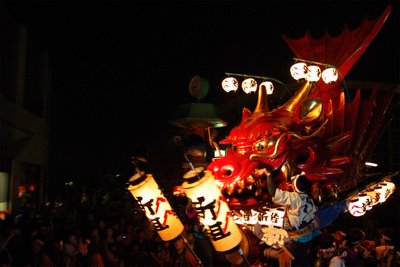
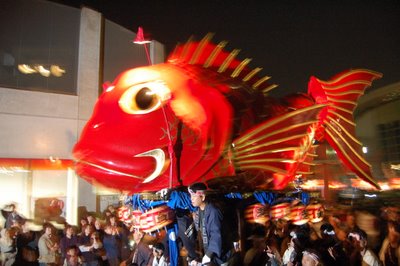 These are no mere museum exhibits; these are living parts of the town, at once both symbol and participant in the life of the place. Each float represents a different part of town, and is pulled only by people from that area.
These are no mere museum exhibits; these are living parts of the town, at once both symbol and participant in the life of the place. Each float represents a different part of town, and is pulled only by people from that area.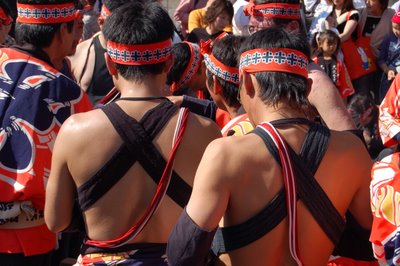 Every group wears a distinct, vividly coloured outfit. They range in age from the toddlers placed in the float and kids who lead the procession, through the burly men who manhandle it around the corners, right up to the greying old geezers who follow behind, grumbling about turning circles.
Every group wears a distinct, vividly coloured outfit. They range in age from the toddlers placed in the float and kids who lead the procession, through the burly men who manhandle it around the corners, right up to the greying old geezers who follow behind, grumbling about turning circles.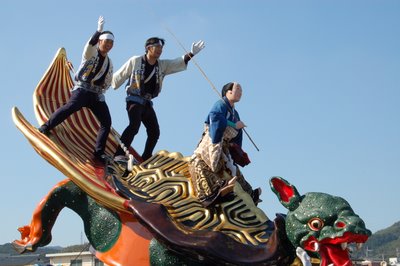
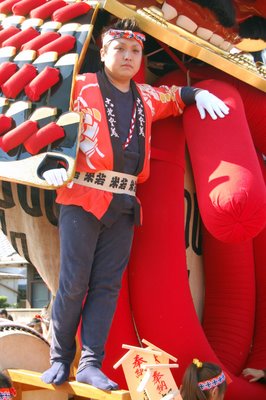 It is essentially quite a simple festival (after all, they are only pushing carts around). But they make sure they squeeze every last drop of interest out of it; pulled at night, pulled during the day; pulled through sand; pulled as fast as possible.
It is essentially quite a simple festival (after all, they are only pushing carts around). But they make sure they squeeze every last drop of interest out of it; pulled at night, pulled during the day; pulled through sand; pulled as fast as possible.
